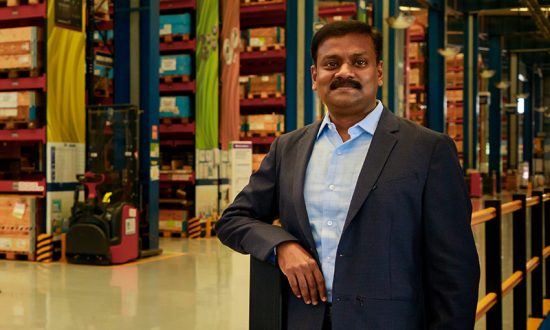Rajkumar has been associated with Grundfos India since 2001. During this time, he has held various positions in operations, customer support and supply chain in India, Singapore, South Africa and in South American countries like Brazil, Argentina and Chile. Since 2013, he has been involved in formulating new strategies for expanding the company’s foot print in India, including setting up a green field manufacturing centre in Ahmedabad, India. In his recent role at Grundfos, George Rajkumar was the Director Operations Strategy for the Asia Pacific Region. Rajkumar holds a Mechanical Engineering degree from Bharathidasan University.
With the rising climate concerns, we continue to witness a disruption in weather patterns that result in an imbalance in water access, increasing water scarcity and reduced groundwater levels. As world nations are adopting measures to combat climate change, water reuse is growing to be a primary propeller in addressing these climate issues and moving towards a sustainable future.
In India, demand for water is growing across various sectors, with irrigation estimated to need 1072 billion cubic tons by 2050. Drinking water, industrial processes and energy sectors are also expected to see an increase in water consumption. As the country stives to become a powerful world economy, the disparity in demand and availability of water is only expected to grow in the years to come. Being a water-stressed country, it is pertinent that India realizes the potential of water reuse in all walks of life and embed it in India’s policies as a fundamental rule.
However, water reuse has been a largely uncharted domain. Globally, about 80% percent of the wastewater flows back into the ecosystem untreated or without being reused. According to the Central Pollution Control Board (CPCB), India treats only a little more than a third of its sewage generated per day. With appropriate treatment solutions and awareness on the power and profitability of recycling water, India can fully explore water reuse and conserve the available freshwater.
Identifying the scope of water reuse
Today, many sectors that are heavily water dependent can implement solutions for water treatment to become self-sufficient in addressing their water needs. This includes industrial facilities of pharmaceuticals, food & beverages, automobiles, chemical & energy, as consuming clean water and generating greywater is a continuous and linear process. Instead, with the use of treated water, a circular mode of water consumption can be adopted, saving litres of freshwater and reducing the burden of overexploited groundwater. Commercial and residential buildings also continue to discard wastewater in their own capacities. From watering plants, to using it in HVAC systems and to acting as a buffer in chemical plants, the prospects to used treated water are endless.
Therefore, this calls for solutions that are designed for varied water treatment needs. It ranges from understanding the concept of reuse, the type and quality of the liquid, the level of treatment required, the infrastructure in place among others. There should also be a focus on the use of appropriate technology that can enable efficient water treatment for reuse in various scenarios. Digital technologies such as Artificial Intelligence (AI) and Internet of Things (IoT) have proven to be beneficial in treatment of the resources.
Strict implementation and awareness of Zero Liquid Discharge (ZLD) or Minimum Liquid Discharge (MLD) in strategic locations will also go a long way in furthering the country’s water reuse potential. Such plants reduce wastewater economically with a focus on producing clean water. This water can then be used for agriculture, industrial processes and domestic toilets and more.
An aspirational case of water reuse from recent times is Singapore committing to treat sewage water into clean water for human consumption. The land-scarce country has installed giant pumps deep underground at a processing plant. This setup transforms sewage into water completely fit for human consumption while curbing ocean pollution. Given the scarcity of water, the government had invested in developing an advanced system for treating sewage involving a network of tunnels and high-tech plants. The system has been so efficient that it now meets 40% of the country’s water demand. It is also said to rise to 55% by 2060. This is a stellar example of how a comprehensive plan can be executed to create circularity in water consumption.
Paving the way for a holistic water reuse ecosystem
The coming together of various stakeholders can show the possibilities of actualizing water reuse as an active process in India. This can start from with the creation of an industry body or an advisory board that can guise policymakers in implementing water reuse techniques for different sectors. Since water reuse spans across various levels, expert counselling on how to execute water treatment for industrial, commercial and domestic applications can help is strategically tapping into the right solutions for each grey water type. Furthermore, individuals can practice water recycling measures at homes and workplaces to develop and normalize the conscious habit of water reuse. This way, India can create a holistic water reuse ecosystem that can ease the demand-supply gap of water.


